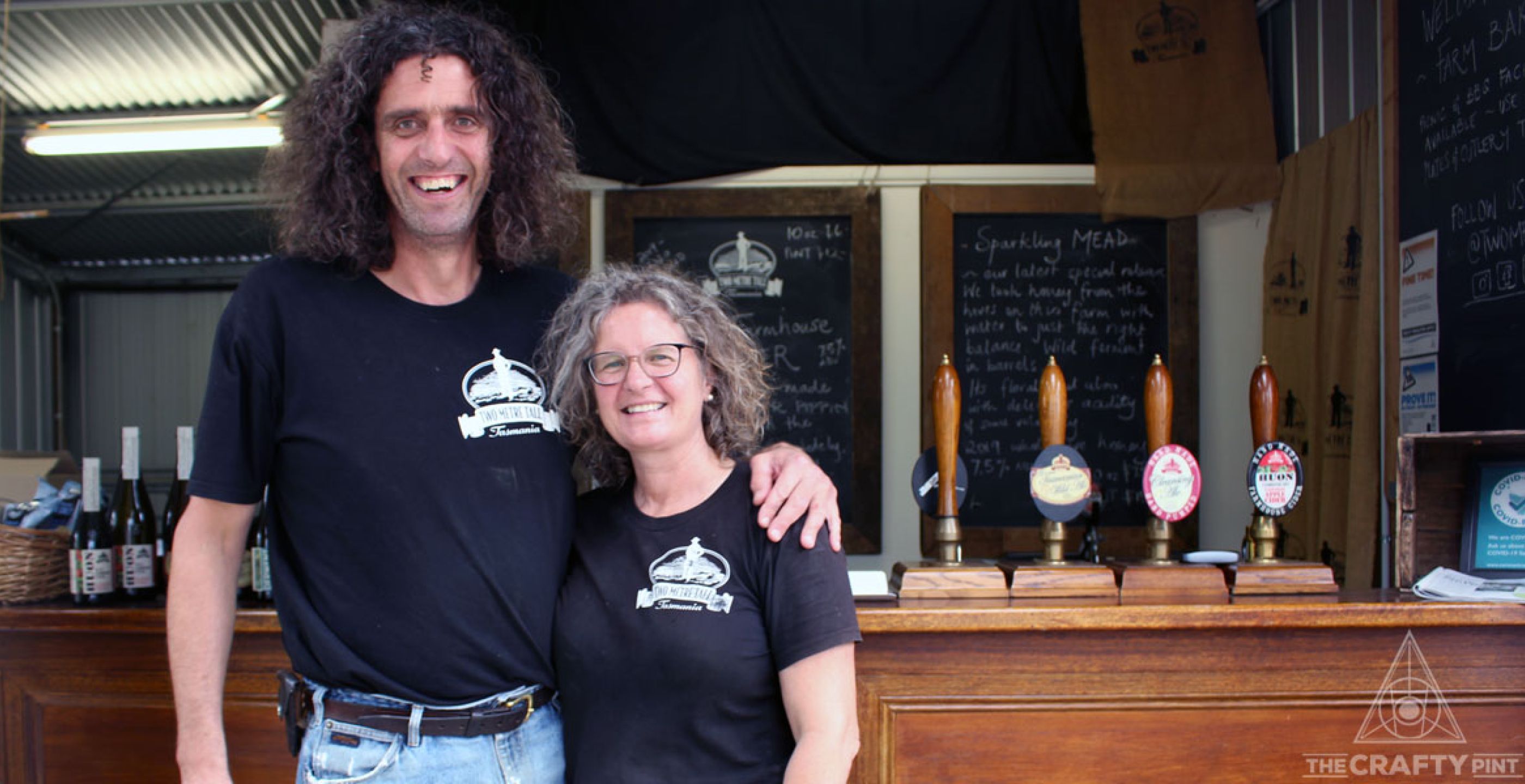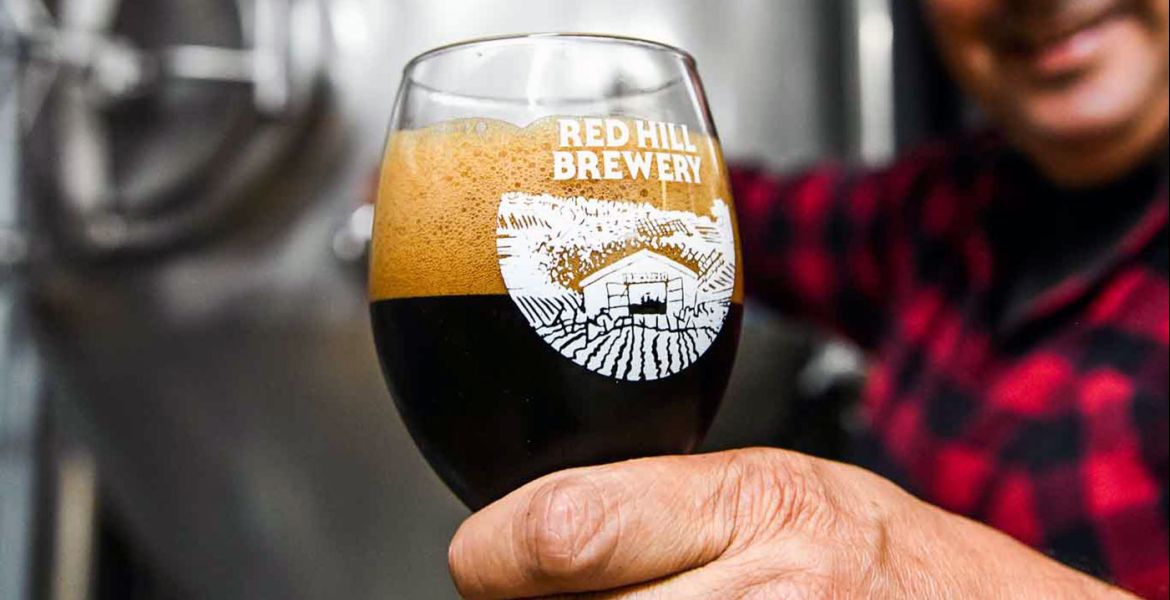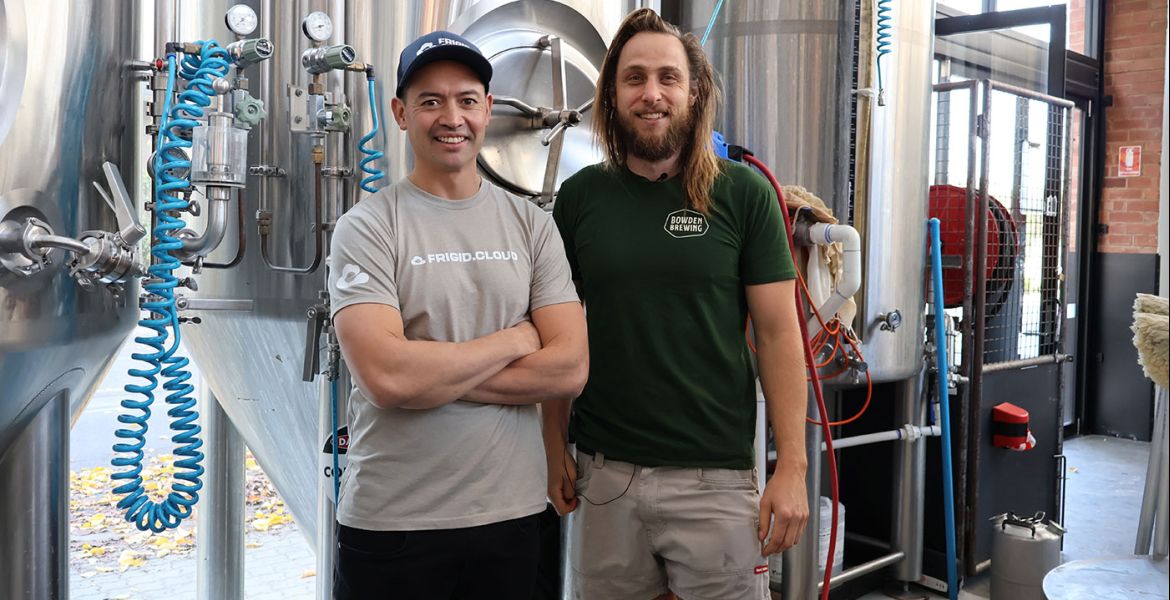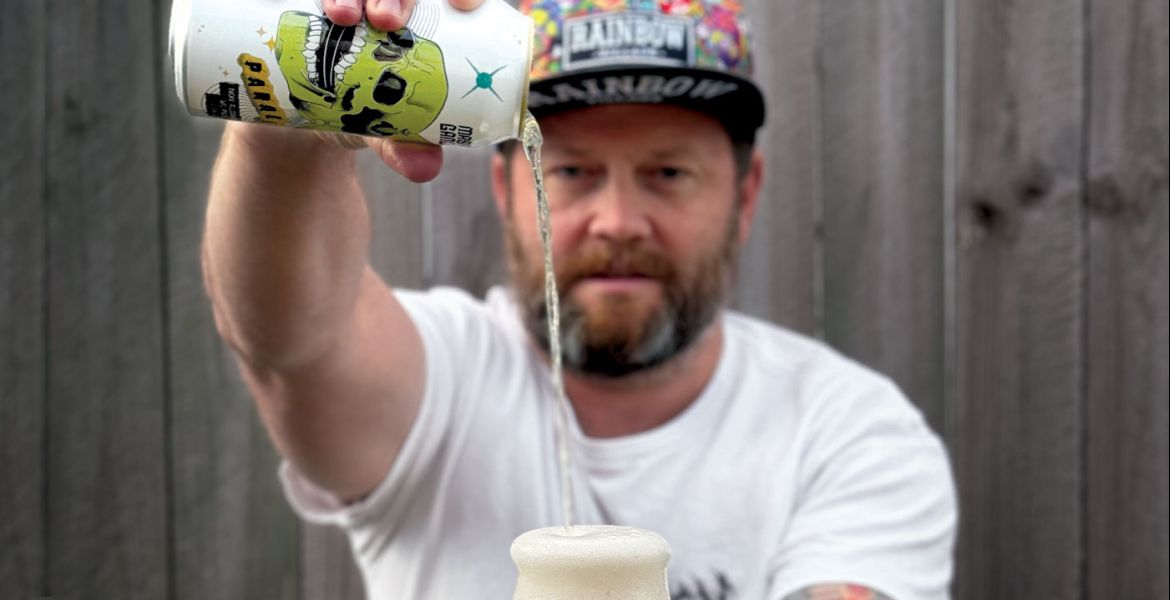The Wild Ones is a series showcasing Australian brewers creating spontaneously fermented-ales – beers brought to life by wild yeasts and bacteria in their backyards.
Just as summer 2022 was ending, we ventured to Two Metre Tall's farm in the Derwent Valley to chat to the couple behind one of Australia's most distinctive breweries.
“If I made a beer that knocked your socks off in 2006 and it was the best beer you’d had in your life, then I was still here trying to make that same thing, well, it would be a very good brewer that can do that…
“But I’d be bored shitless and would have left six months after making that beer.”
At Two Metre Tall, change is a constant.
The beers, ciders and mead they produce are in a state of constant flux, evolving between batch, bottle and over time too.
But at the same time you'd struggle to find a brewery in Australia where things remain as constant as at Two Metre Tall in Tasmania’s Derwent Valley.
As I make my way up the long, winding and dusty driveway to their cellar door during summer’s final days, memories of my last trip here seven years earlier flood back.
Much about the brewery feels exactly the same: the old brewhouse and spiderweb-covered barrels still sit in their shearing shed; hand pumps pour a selection of farmhouse ales you won’t find anywhere else; and the bar in which they sit looks remarkably similar to the one of my memories too.
And, yet, much has changed. The beers on offer might share a deep affinity with previous releases but they come with their own nuances, complexities and stories of season and place that separate them from what's come before. The surrounding bacteria and wild yeast that’s so integral to each Two Metre Tall release would have changed myriad times over too. The farmer and fermentalist who guides raw ingredients into these complex and unique beers still casts a long shadow but that said, he’s also a new man. Well, at least part of him is following a hip replacement a few weeks earlier...
You could also say I’ve become more learned in the years between visits; this time I've packed cheese from Bruny Island to accompany an afternoon that will be spent at the farm drinking and discussing delicious beers, ciders and mead.
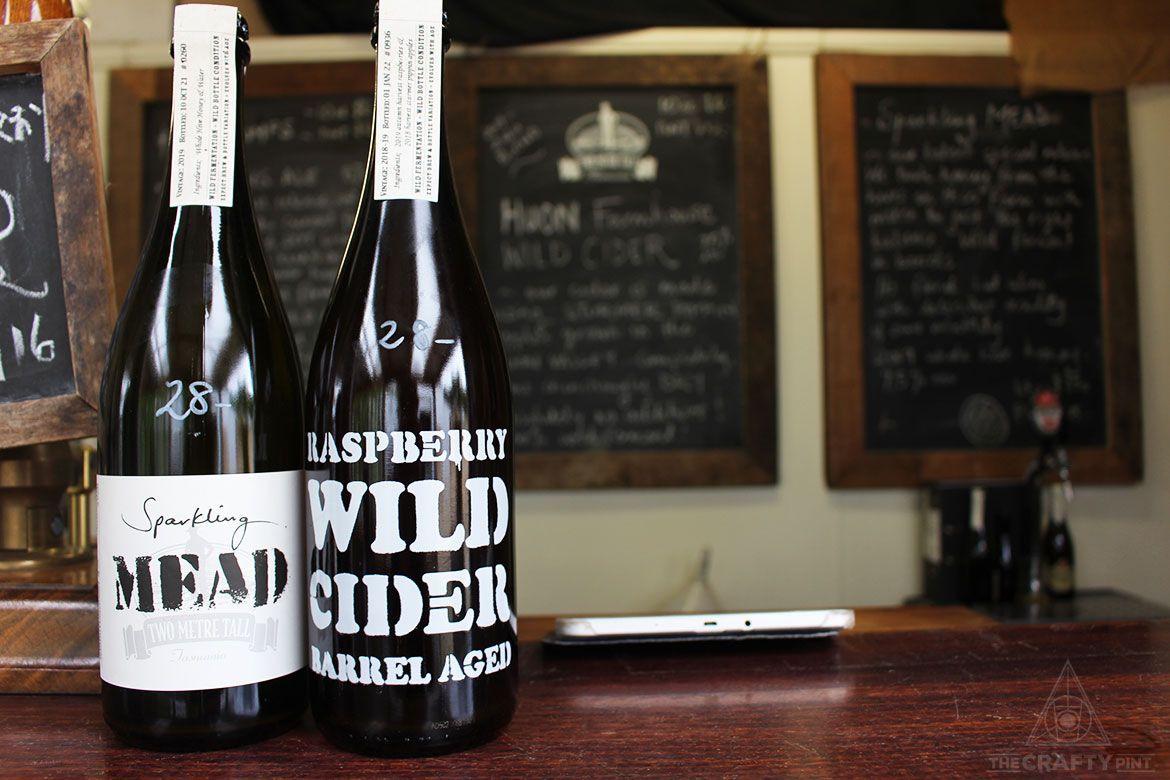
The farm itself was bought by Ashley and Jane Huntington back in 2004; Ashley's brewing began soon after, while the brewhouse itself predates brewing on the farm by some time: it was originally installed down the road in Battery Point in the late 1980s.
Throughout Two Metre Tall's history, Ashley and Jane have formed the entire labour force, and have spent the last decade and a half showcasing their farm through the drinks they make, which often break down barriers between alcoholic beverages – an approach that remains rare in Australia. As for their origin story – that of a winemaker returning to Australia after years in France to find himself in the heart of the country’s hop industry but with no breweries in sight – that's one we’ve written about previously.
Back to today, and even though their approach is a case of evolution over revolution, another constant from this independent, family-run brewery is changing. Sure, Cleansing Ale – a beer Ashley’s brewed since early 2006 – has always changed, both from batch to batch and the liquid in each bottle – developing acidity, sourness and complexity as the months from bottling date pass by. But now the labels are changing too and, again, it almost feels odd to point out such a thing given each bottle from Two Metre Tall has its neck adorned with a strip of paper containing quite astonishing levels of detail of how and when it was made.
“We’ve dedicated basically the last three years to this change,” Ashley says. “Which has been building for seven or eight years.”
A Cleansing Ale is on the way out and in its path is A Tasmanian Wild Ale, a spontaneously-fermented and conditioned beer developed on a solera system. It feels like a profound change for a beer that's been a mainstay at Two Metre Tall for so long, although while Ashley has a lot to say about the process, he states: “It will sit in the shop looking remarkably similar.”
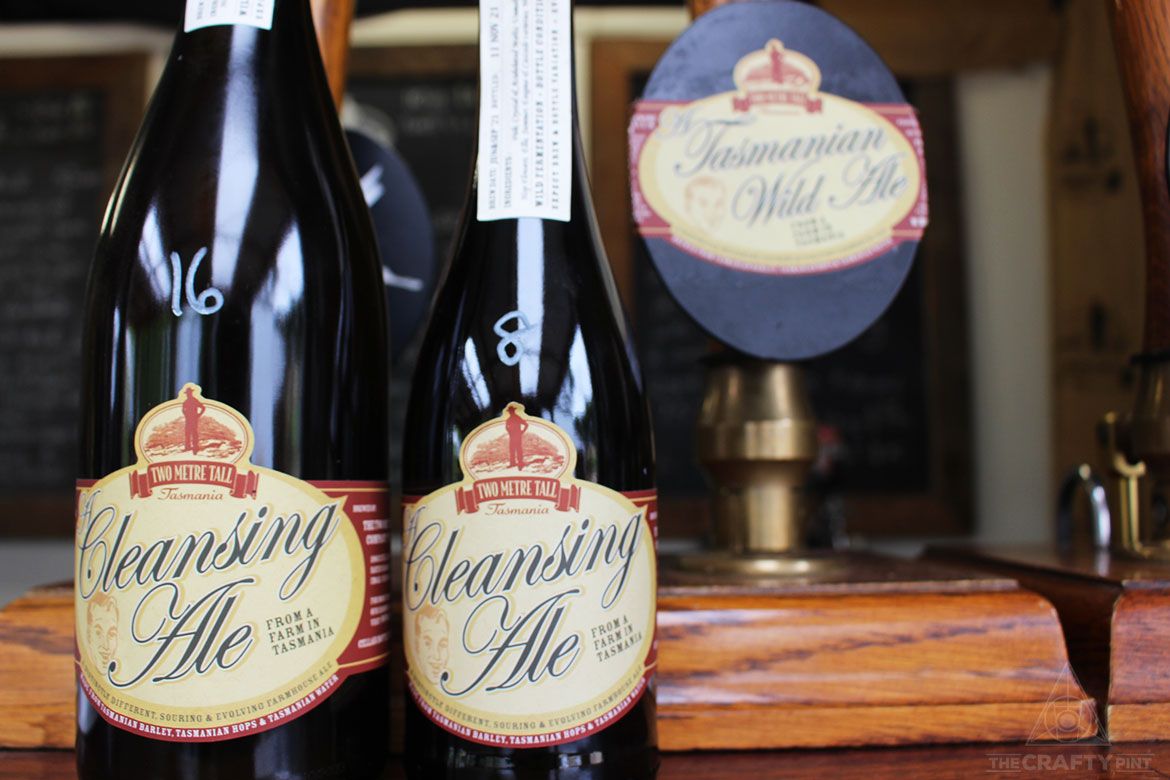
There's always much of the wild about the brewery and their barrel-aged farmhouse beers and, given the fact the latter are in that constant state of flux, there has never been a shortage of varied bacteria within everything the couple have released. But for a brewery that’s steeped in farming, funk and complexity, this Tasmanian Wild Ale feels inherently richer in all three facets.
Like Two Metre Tall’s Derwent Aromatic Spelt Ale or Forester Amber, Cleansing Ale may source a lot from its surrounds but it has always included something that’s disappearing from Ashley’s toolkit: brewer’s yeast.
“Cleansing Ale has been brewed with a packet yeast and it, the Derwent, and the Forester use the same packet yeast but don’t taste anything like each other and never have,” he says. “And the packet yeast is just the most neutral Saccharomyces I can get my hands on.”
His reason for using packet yeast was to help bypass some of the ugliness such beers can possess in their infancy.
“The first six months smell like vomit,” is how Ashley puts it.
"That addition of the yeast didn't affect the flavour per se, but it remarkably shortened the time within which I could sell a beer; it stopped misbehaving."
It's a change that's taken place elsewhere too: late last year, they dropped the addition of a champagne yeast in their Huon Farmhouse Dry Cider – which first appeared in 2009 – for a secondary spontaneous fermentation as it transitioned to Huon Wild Farmhouse Cider.
And in the case of A Cleansing Ale, in place of the packet yeast is a 30-barrel solera system of spontaneously-fermented beers of varying ages that Ashley is constantly assessing, understanding, taking notes on and considering.
“To make the change, we’ve moved to a solera system, which is a very winemaking thing, from Portugal with the blending of ports,” he says.
“This is a completely spontaneous ferment and completely spontaneously bottle-conditioned. And the average age is less than 12 months; there are things in there that are four years old and there are things in there that are two months old.”
Ask Ashley exactly what this Tasmanian Wild Ale should taste like, and whether he has a final flavour for the blended beer in mind, and his answer couldn’t be blunter.
But nor could it be more romantic.
“What do you want in the end product? Well, a wild product," he says.
“Because it is wild, it has to be what it is, not what I want it to be."

For this most idiosyncratic of brewers, the approach of making something truly wild couldn’t be much further removed from producing beer in a factory. It’s what sparked the quote at the start of this story: Ashley never made beer before starting Two Metre Tall and even today he's in no way making stable, consistent beer and has no interest in doing so.
“For us, [the brewhouse isn't] very important, this is just day one of a very, very long process and has remarkably little input on what happens. It sort of sets the colour and gives me a sugary, fermentation base.
“The biggest achievement I’ve made in my time here is to be able to look in a barrel, recoil in disgust, note down the date and time in my little black book, and walk away."
The importance of this farm and how the beer or cider expresses the spirit of the place is essential when it comes to understanding the mindset behind Two Metre Tall, and it's a philosophy that borders on the esoteric or the abstract.
“We’re a business dedicated to making brews where the less input and footprint we can put on them, the better,” Ashley says. “What’s the benefit of taking that hard way? The less we do, the more they will stamp themselves of being here.
“It’s emphatically from here and that’s the only thing that really matters."
To further drive home the point, Ashley grabs a bottle of mead and plonks it on the table in front of me.
“This makes the hair stand up on the back of my head, thinking about it,” he says, while pouring me a glass.
“It’s honey from here, water from the river that’s been untreated, and it's spontaneously fermented and spontaneously conditioned. I do fuck all except worry, because when I bottled it, it wasn’t working – it tasted like I had been hit by a steel bar. But now it’s just so gorgeous.”
He’s right: the mead’s complex, bone dry and switches between different pockets of flavours without any of them reigning supreme or creating a mess. I’ve found some meads to be a touch muddled or volatile and, while this one’s quite acetic, it’s also incredibly drinkable and dying to be shared with the cheese idly sitting in my rental car's boot.
“I had no discretion or input in the harvest of this raw material; that’s the bee,” Ashley says. “And the bee took it from whatever was there at the time, so there is nothing that can replicate the agriculture of this farm in terms of a raw ingredient because I had no input.”

Like speaking with any farmer, a conversation with Ashley quickly turns towards the seasons and how one year looked compared to another. Past droughts have caused some batches of Cleansing Ale to be heavier on Brettanomyces than lactic acid, resulting in less sour ales. Of course, the Huntingtons have still sold them and said, simply: "This is how it tastes now."
It impacted his mead too. In 2019 – the year the liquid in my glass started its journey from honey to alcoholic beverage – this part of Tassie faced a particularly dry spring, making it a tough season for farmer and bee alike. As a result, the 2019 vintage is more acetic, while 2017 leant more towards lactic acid.
“This tastes like [that year]. Even if you’re not here, don’t know and don’t care – it’s communicating to you without you really thinking about it.”
Even Ashley and Jane’s own impact on this place, due to the fact they’ve brewed here for so long now, is something that plays on the farmer-brewer’s mind.
“The site is a form of selection really, and I sit here and have these stupid debates all the time,” he says.
“I'm also shooting myself in the foot; because I’ve brewed here for 18 years, I’m sort of culturing, in a strange way. But I’m not doing it, things are dominating and moving, and I just have a broad spectrum of how it goes in a rhythmic sense.”

This years-long focus on transforming what’s already quite a niche form of beer making into a slower, arguably less economically viable business, is just part of what defines Two Metre Tall. Ashley's determination to extract himself more from how their drinks take shape is also driven by a desire to further distinguish their approach from the wider industry.
“The change is both a very important evolution of what we do, but part of it is also an expression of deep frustration with bullshit around the technical aspects associated with the word wild,” he says.
Ashley’s quick to decry the way language can be ripped from other drinking cultures and used to try to explain or categorise beer in Australia. Our conversation is peppered with questions such as: What on earth is a New England IPA made with Australian hops? Do we really understand terroir in Australia? Or why are Australian brewers increasingly keen to get their hands on coolships? What good is a packet of yeast with the word wild on it?
“There’s not much Australia has created in the beer world, not even within this ten or 15 year period of craft beer,” Ashley says. “We sit back, we absorb everything that comes in and we copy it at enormous speed and make tinkering variations on the side.
"There is something terribly attractively nerdy about getting yourself a reverse osmosis machine and dialling up the exact mineral content of the River Trent before making the ultimate pale. Except they do that there anyway so why would you bother? Why wouldn't you let them do it and make something from here?"
The tendency for brewers to try and mimic the lambic brewers of Belgium is a continual sticking point for Ashley: why copy when you can create and build your own category? It’s why he shuns the very idea of awards and their requirement that the world fits neatly into categories.
“If some Belgian guy brewed a Tasmanian farmhouse ale and won a gold medal at his local show for the best Tasmanian farmhouse ale, then I’m going to personally go and sort that out myself.”
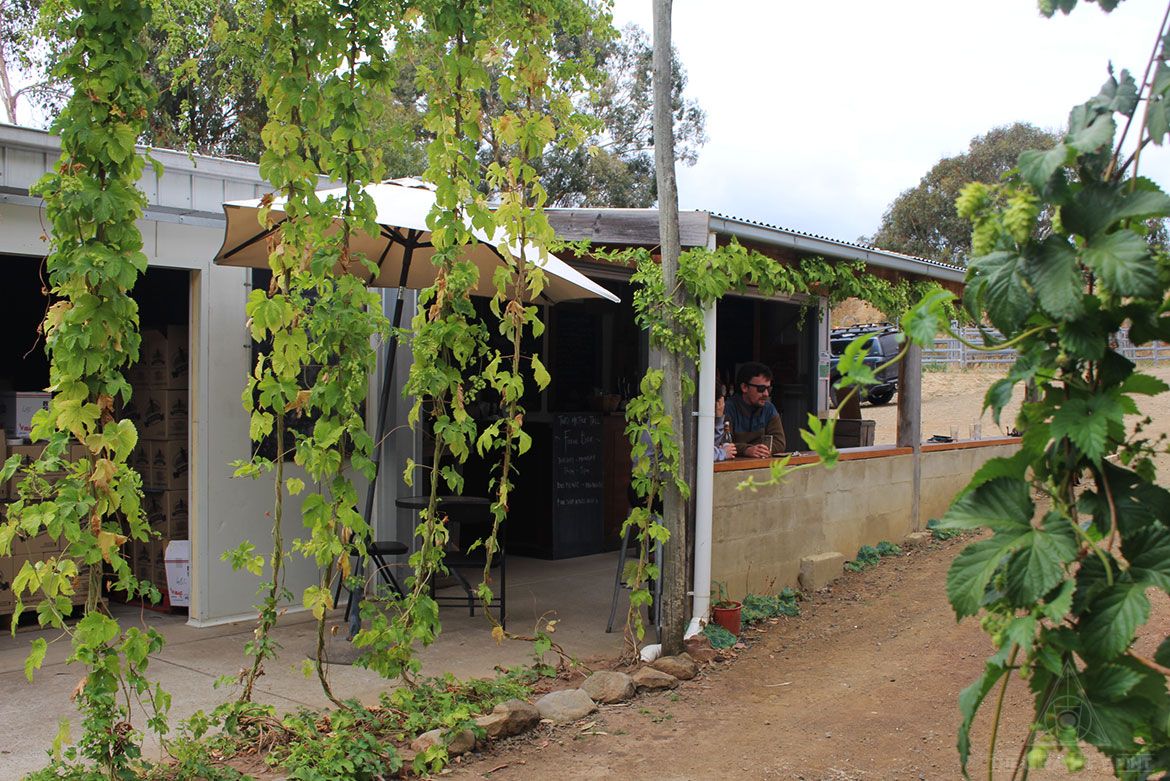
While anyone who’s ever witnessed Ashley speak will appreciate his skills as an orator – not to mention a tendency to speak his mind – Jane (pictured on the right at the top of this article) is often the first introduction to Two Metre Tall for anyone who makes their way along the valley to pay a visit. Her previous career as a teacher has left her well-placed for a life spent introducing people to such uncommon styles of drinks, and an even less common ethos.
She recounts not quite seeing eye-to-eye with a brewer who’d popped into the Farm Bar and wanted to compare his mixed-culture beer to those she was showcasing.
“I just had to say that we’ll have to agree to disagree,” Jane says. “To me, if you’re opening up a packet of Brettanomyces yeast then it’s something isolated and specific, then it’s not wild.”
Ashley’s also eager to point to the difference in mindset that making truly spontaneous beer brings. Most brewing takes place in factory style setups and is a manufacturing pursuit; while making mixed-culture beers can bring great results, he sees it as fundamentally still tied to that production mindset.
“Wild is conceptually and practically a thing apart from other beer and any other statement doesn’t do it justice whatsoever,” he says. “Mixed culture will produce fascinating characteristics but it’s not wild.”
While it's simplest to draw a line between what's being brewed by Tasmania's Derwent River with what people have spent hundreds of years making in parts of Belgium, Ashley is quick to point to the distinctions. Lambic brewing halts in the warmer months because overnight temperatures don’t drop low enough to create ideal conditions for the brewers. There's no such tradition on this farm: Ashley makes beer however he pleases.
“Spontaneously brewing in the summer, which the lambic brewers would never do," he says, "I do frequently and can do and do it safely.”
If you were an Australian brewer looking to get into brewing spontaneous beer, investing in a coolship (or koelschip in Flemish) might be your first port of call. Such vessels are used to both cool the wort and allow the bacteria in the air to get to work, and possess an in-built romance, especially if you've taken a tour of a Belgian brewery like Cantillon.
Again, however, it's a mindset with which Ashley has no truck.
“I’m the biggest cynic of coolships,” he says. “I’m not disagreeing that you won’t get some settling of stuff that’s in the air. But the very next morning when the wort is cool, they transfer it to the barrel, so they‘ve just cooled the wort and it starts fermenting in the barrel.”
Given the amount of time it takes to make beer the way they do, Ashley says any coolship time is negligible compared with time spent in oak.
“If they let it ferment then sure, but if they do it for six hours and then put it in a barrel they just negate what they’ve set out to do.”
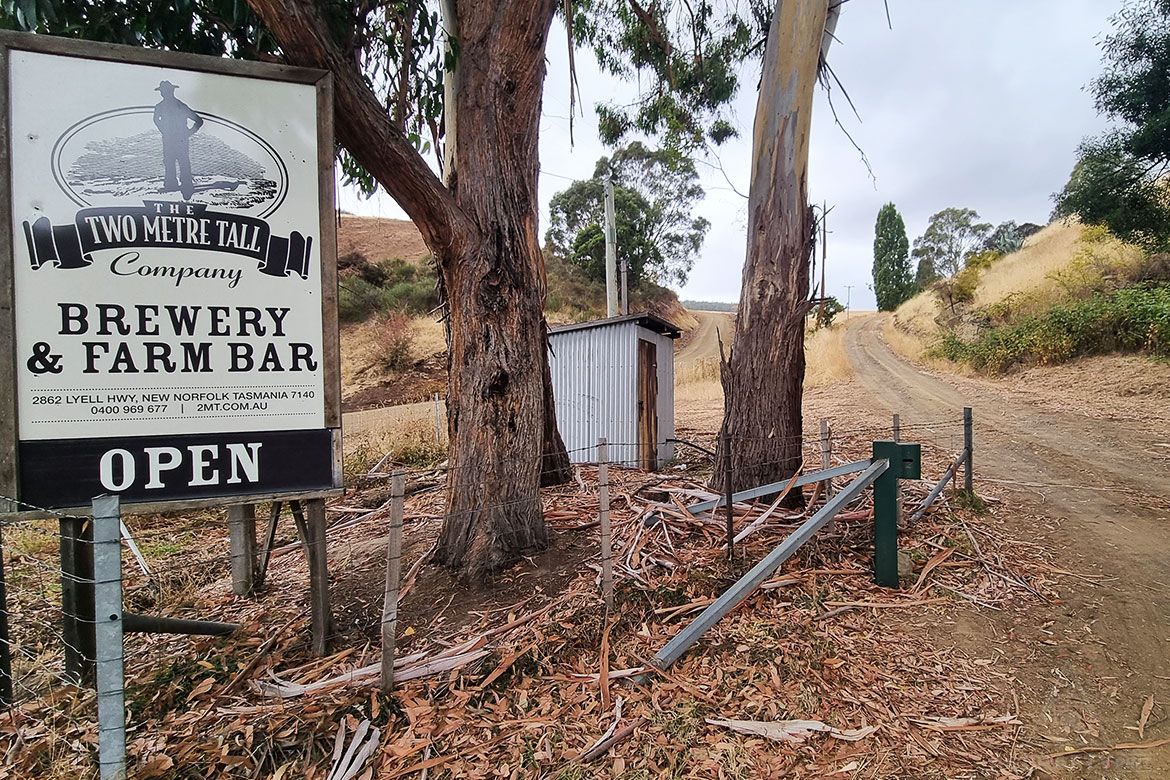
This desire to express their farm and other Tasmanian producers in everything they ferment is something Ashley sees as innately difficult for brewers compared with winemakers. Malting is a highly controlled process and, while malted grains create a fermentable base, they're less intrinsically capable of representing where they were grown than grapes are.
“Part of the job that goes with the growing is making the product that can deliver the difference,” he says.
Two Metre Tall's Forth All Grain Farmhouse Ale fittingly captures that philosophy and their wider desire to not only showcase their own farm but also the raw ingredients grown by other Tasmanians. It’s one of multiple beers named after one of the state’s rivers and is brewed without hops, instead featuring grains from northern Tasmania, including organic quinoa that creates not just bitterness but also brutal brew days.
But aside from further embracing all things wild, they're continually increasing the farm's productive output: there are long-held plans to make malt of their own, while hundreds of raspberry plants and apple trees have been planted.
“[Our ingredients] are either from here or from wherever we can get them in Tasmania. But I don’t actually want to cut myself off: if I find something that tickles me pink then I work with it.”
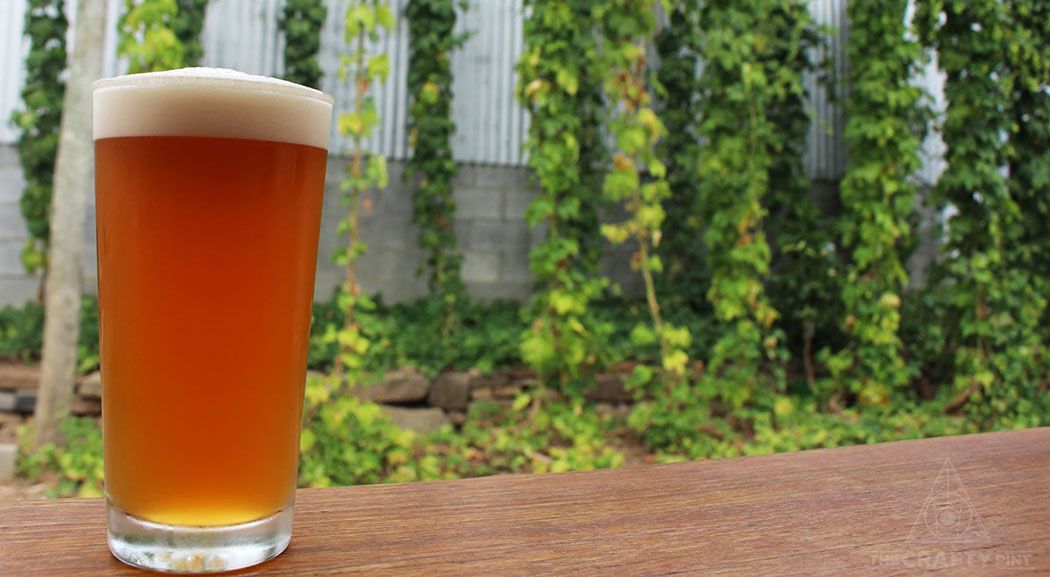
At Two Metre Tall, change is a constant.
The beers change, the farm changes, and the knowledge that drives Ashley and Jane changes too. Ashley couldn't be more excited for the future of embracing wild, but as they edge ever closer to two decades working on this patch of earth, he still feels the world of wild ales is so evocative, has so much to give us as drinkers and he has so much to learn.
"We've been here for 18 years and I'm just moving A Cleansing Ale to A Tasmanian Wild Ale and I'm not even sure where I am relative to the start of this knowledge – it is massive.
“It’s so exciting to have spent so long and be so far down the fucking mineshaft with no safety belt on. And before it all ends and all the lights go out, there are these little joys of, ‘It’s working'."
You can read the launch article for The Wild Ones here and learn all about the approach taken by Van Dieman Brewing in our feature on their wild ales here.




